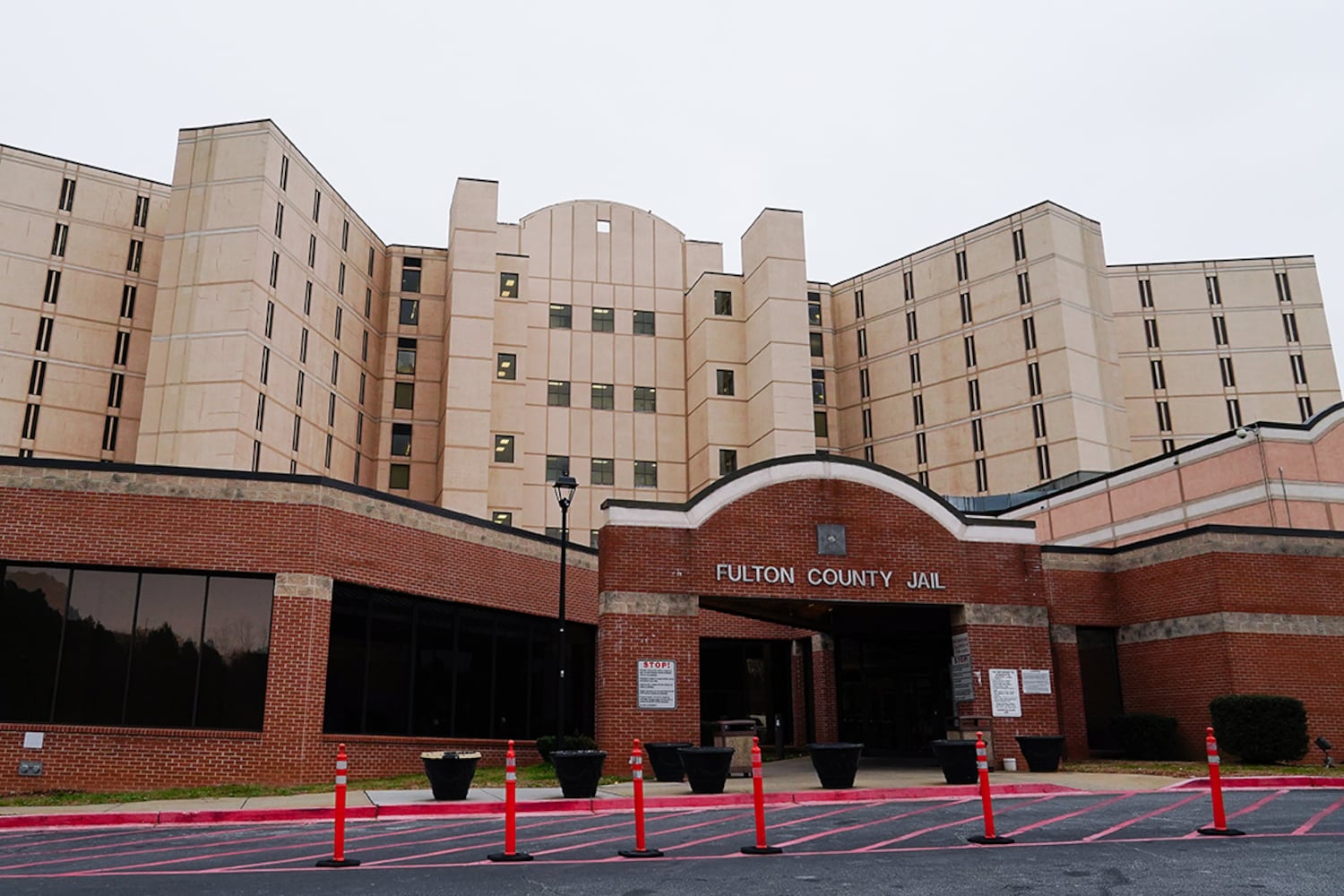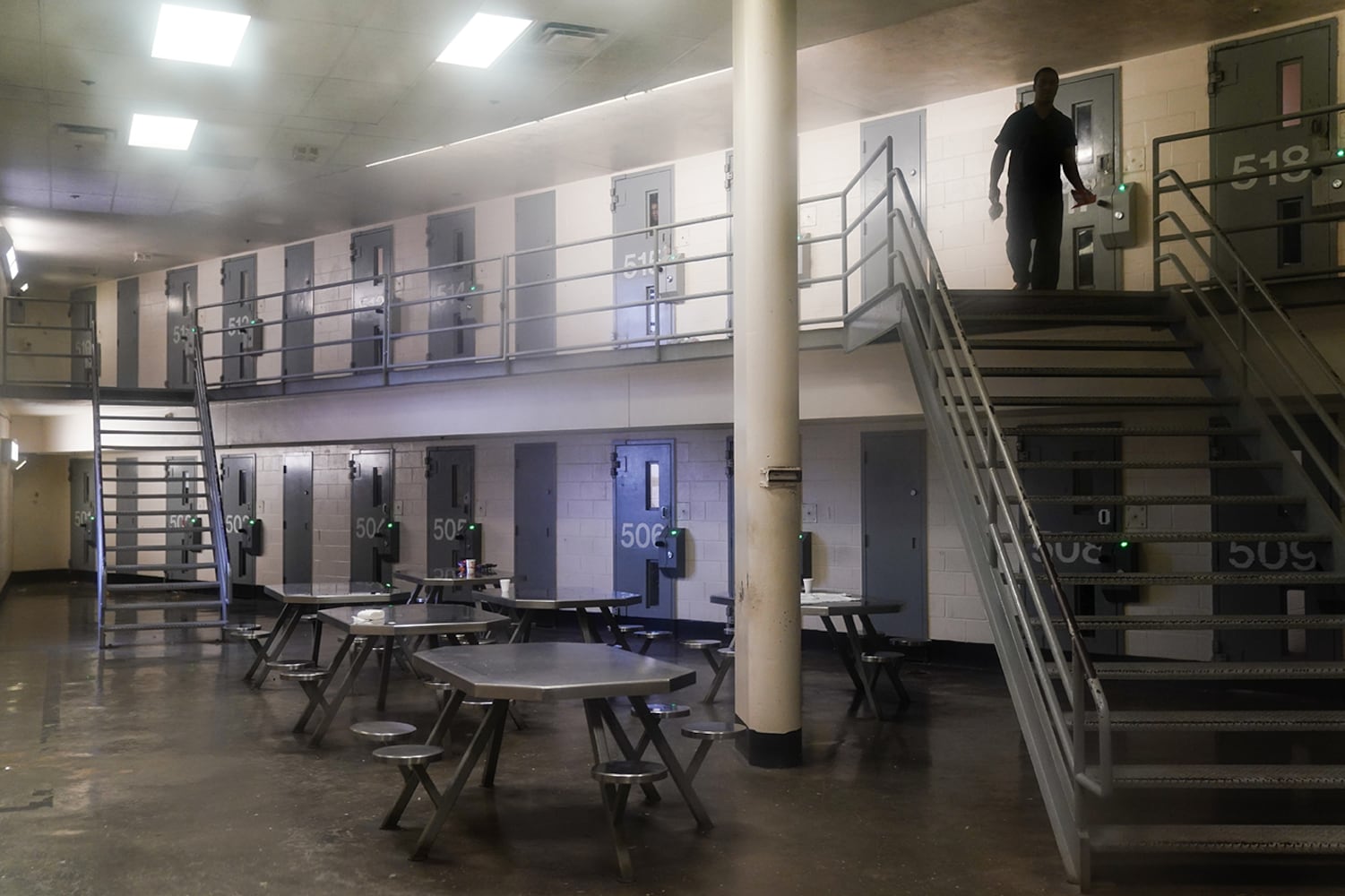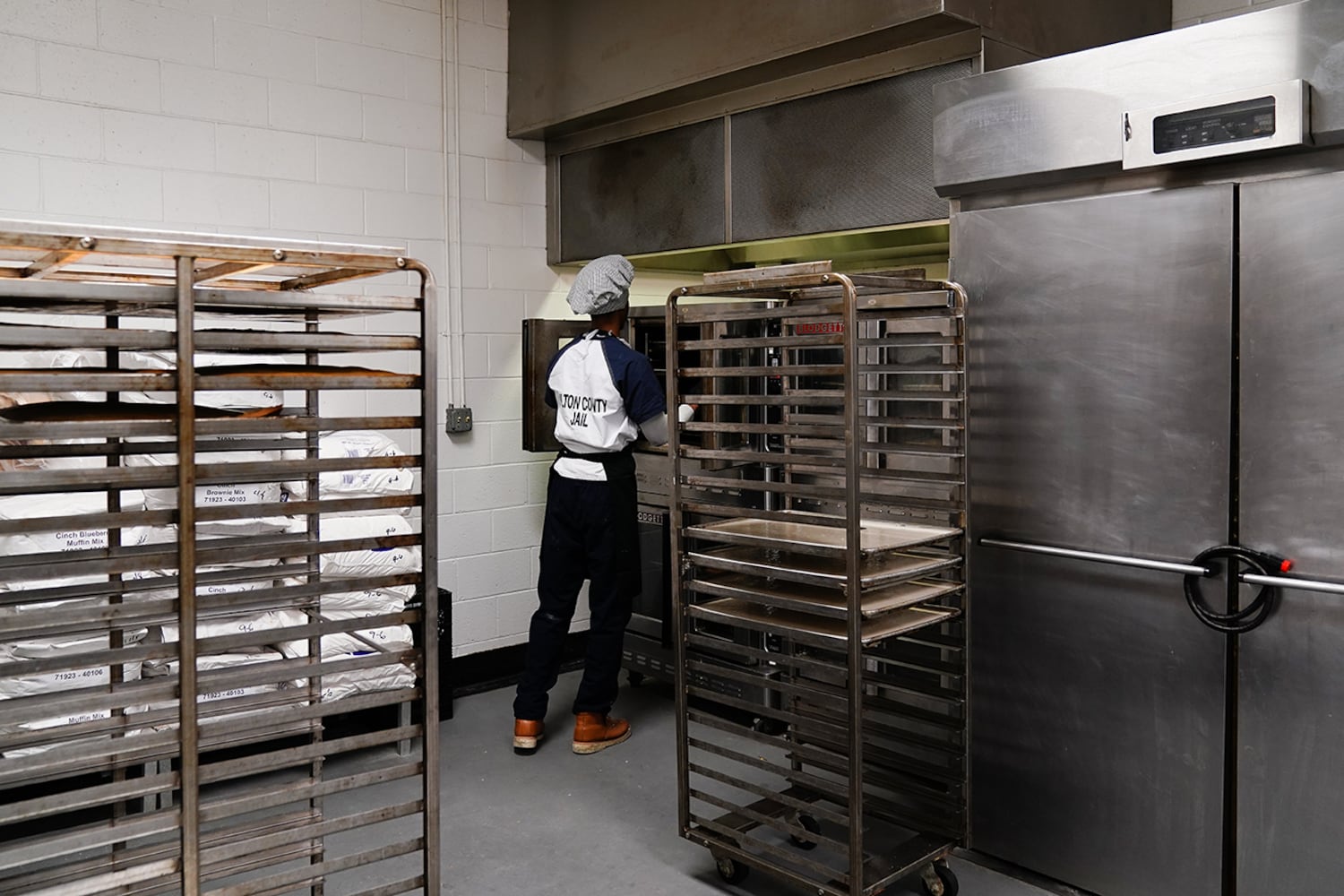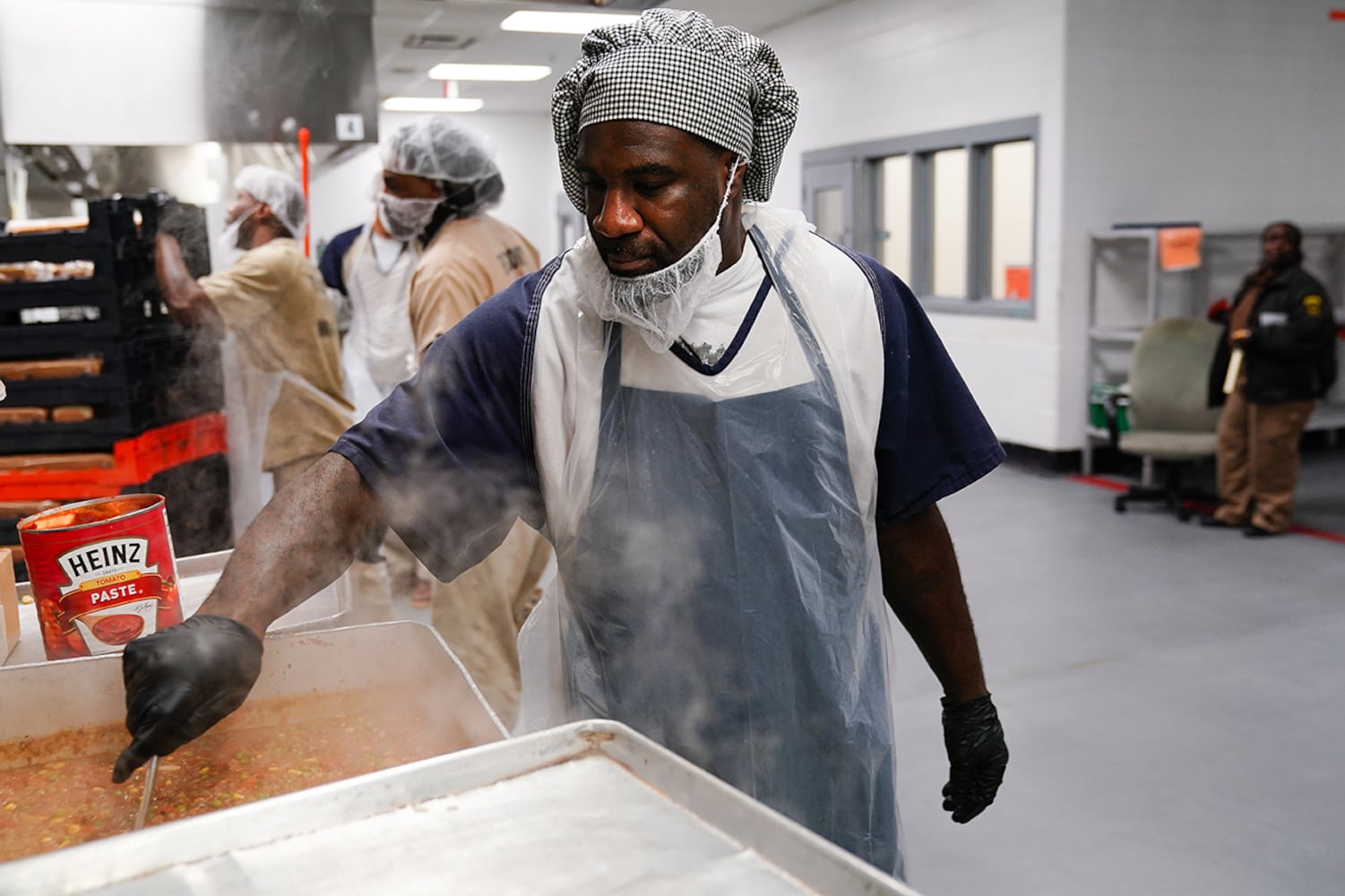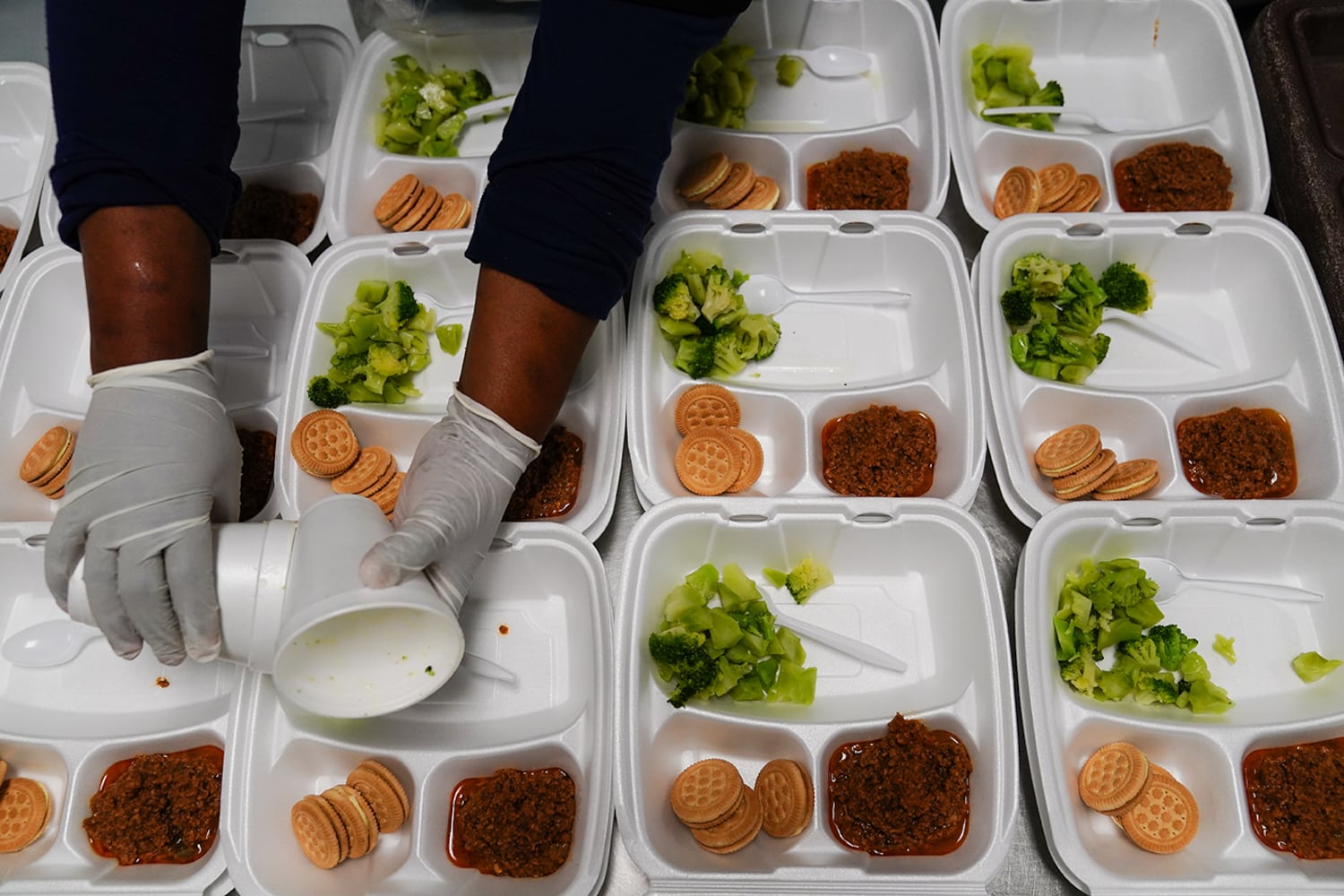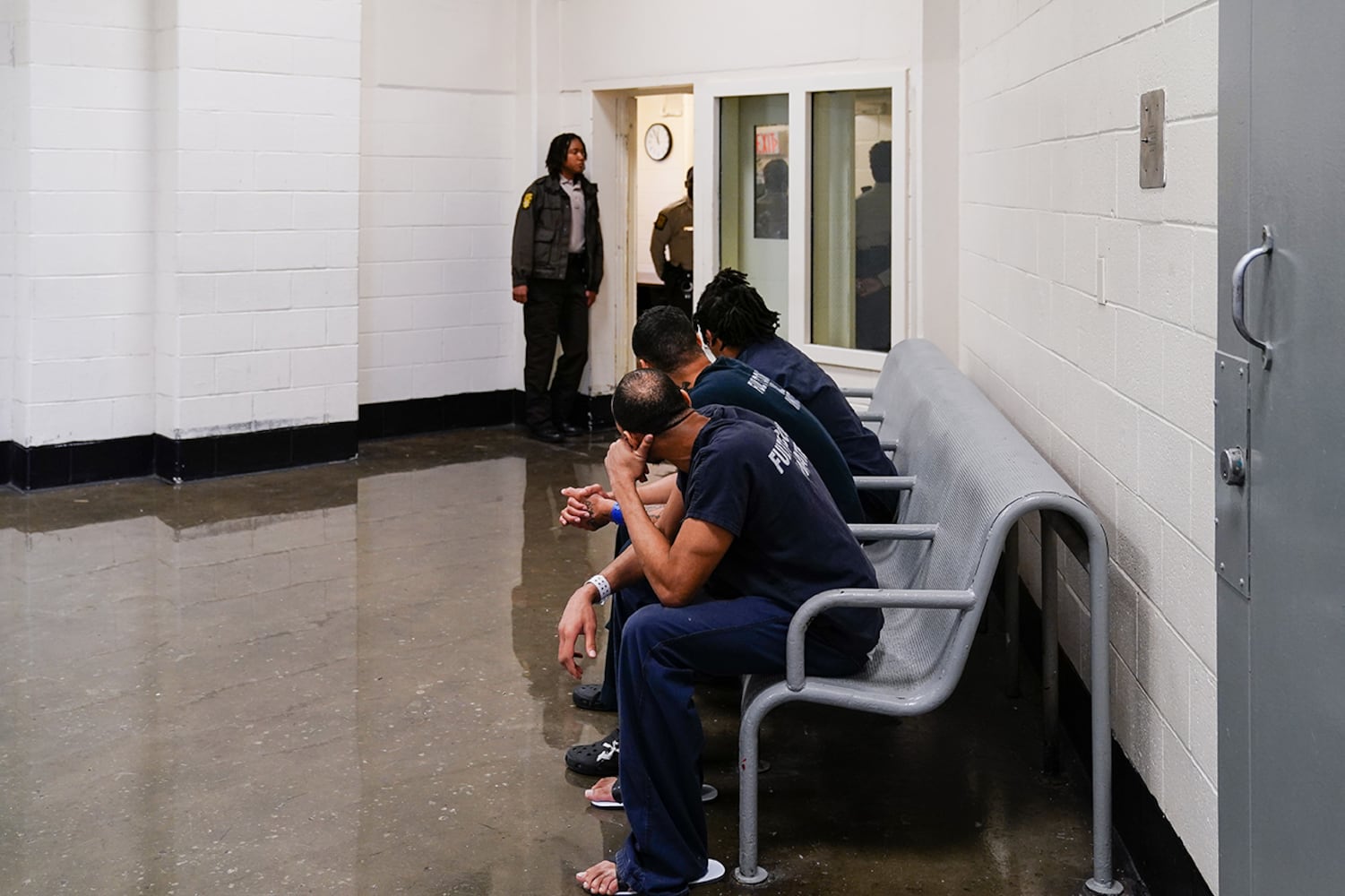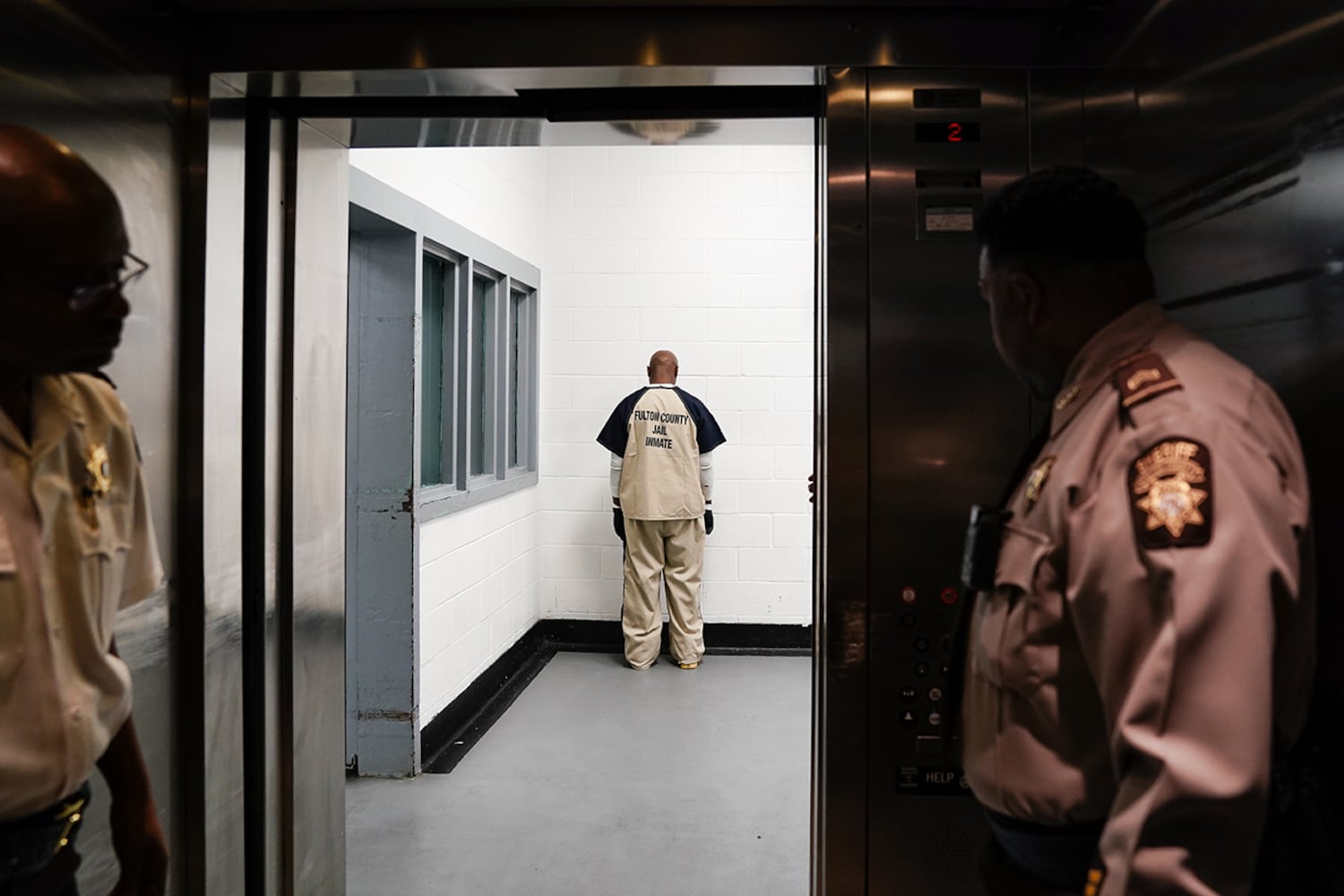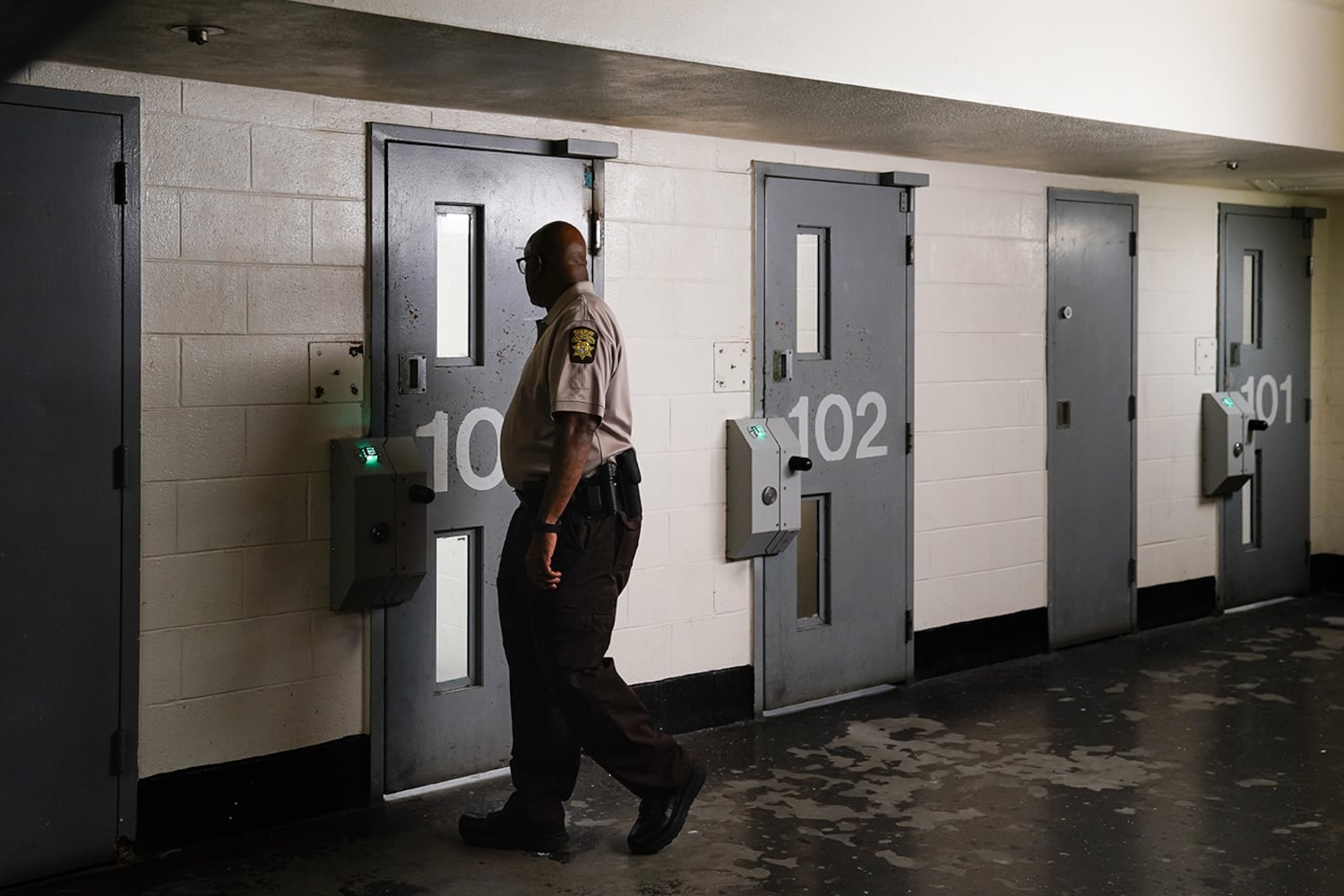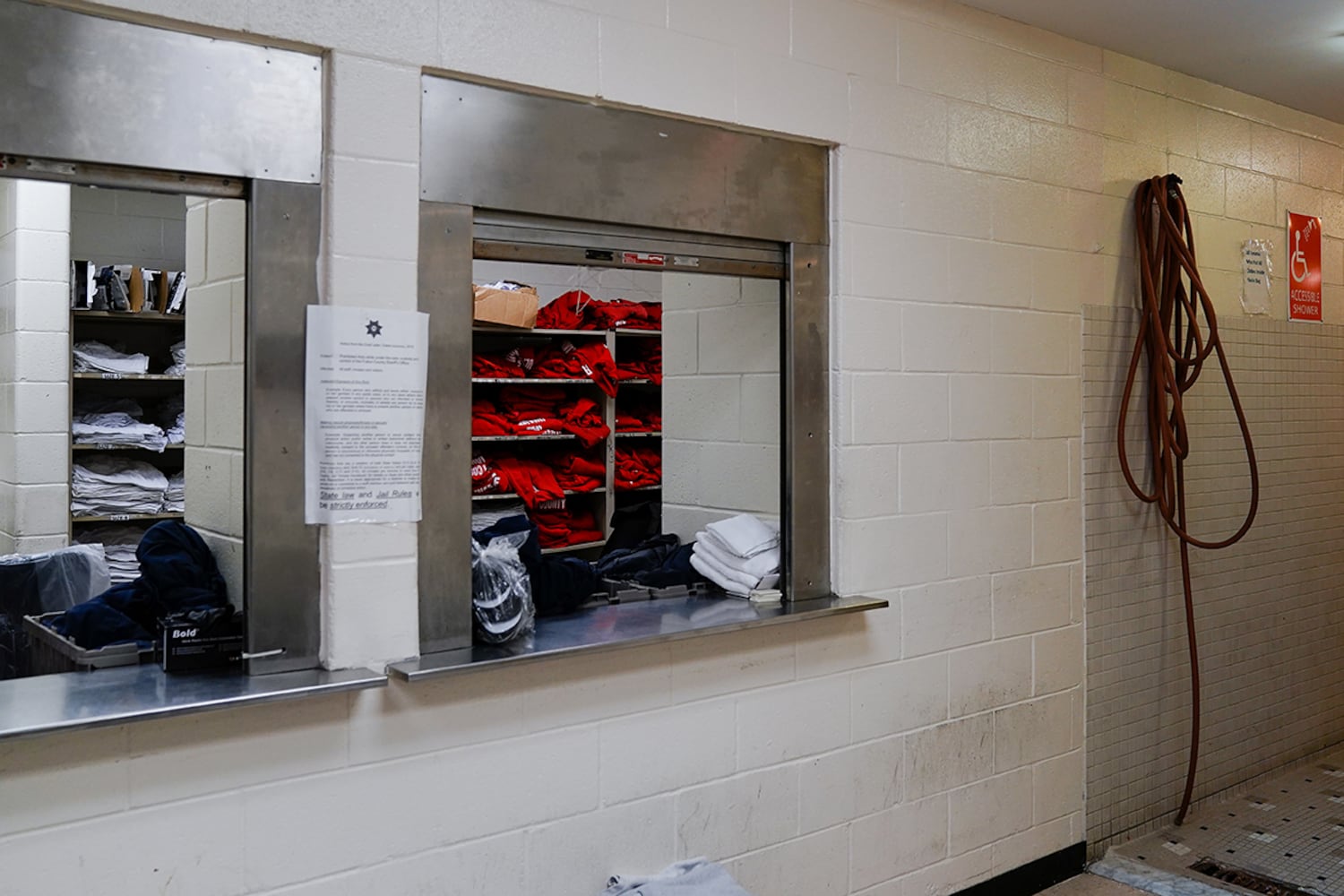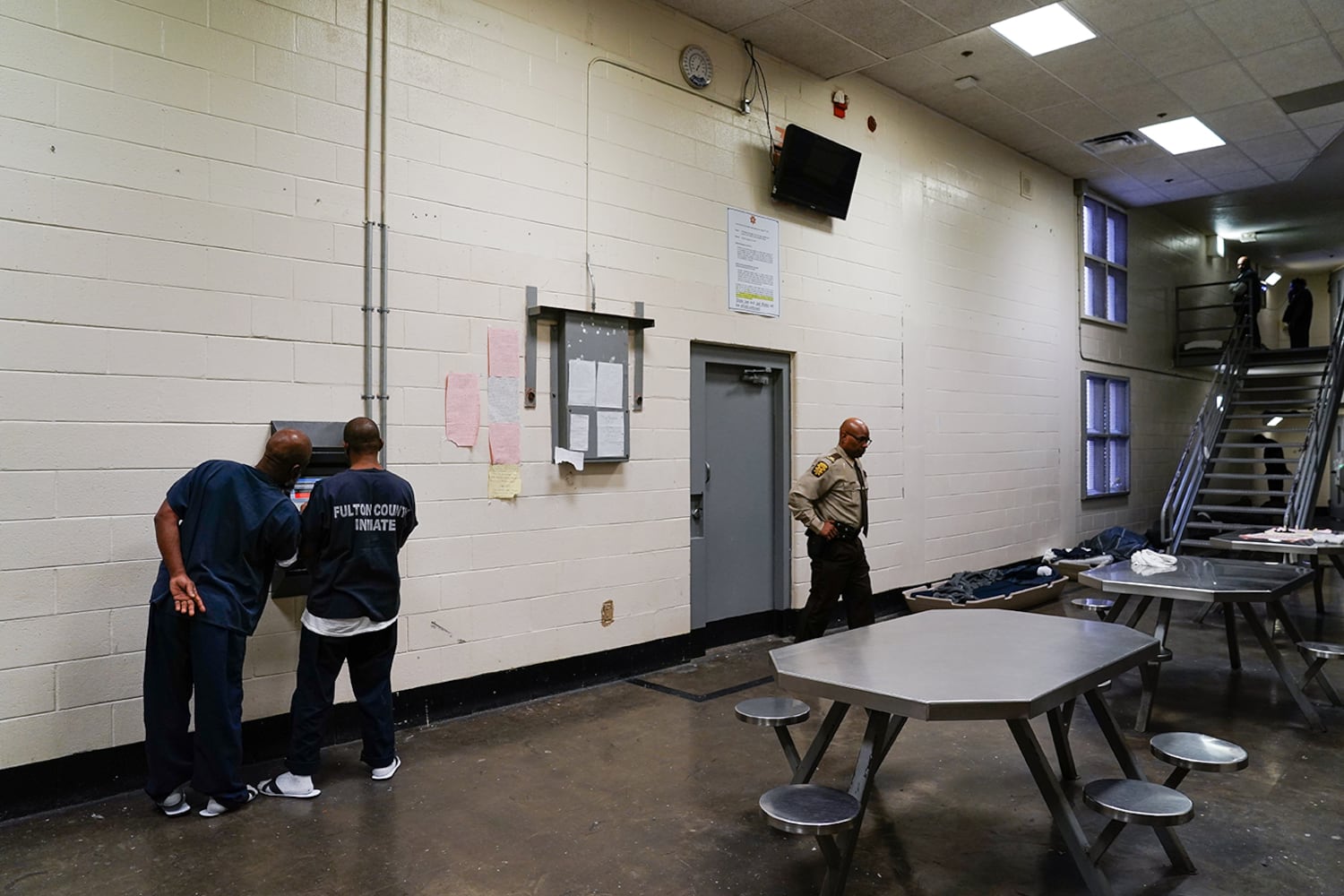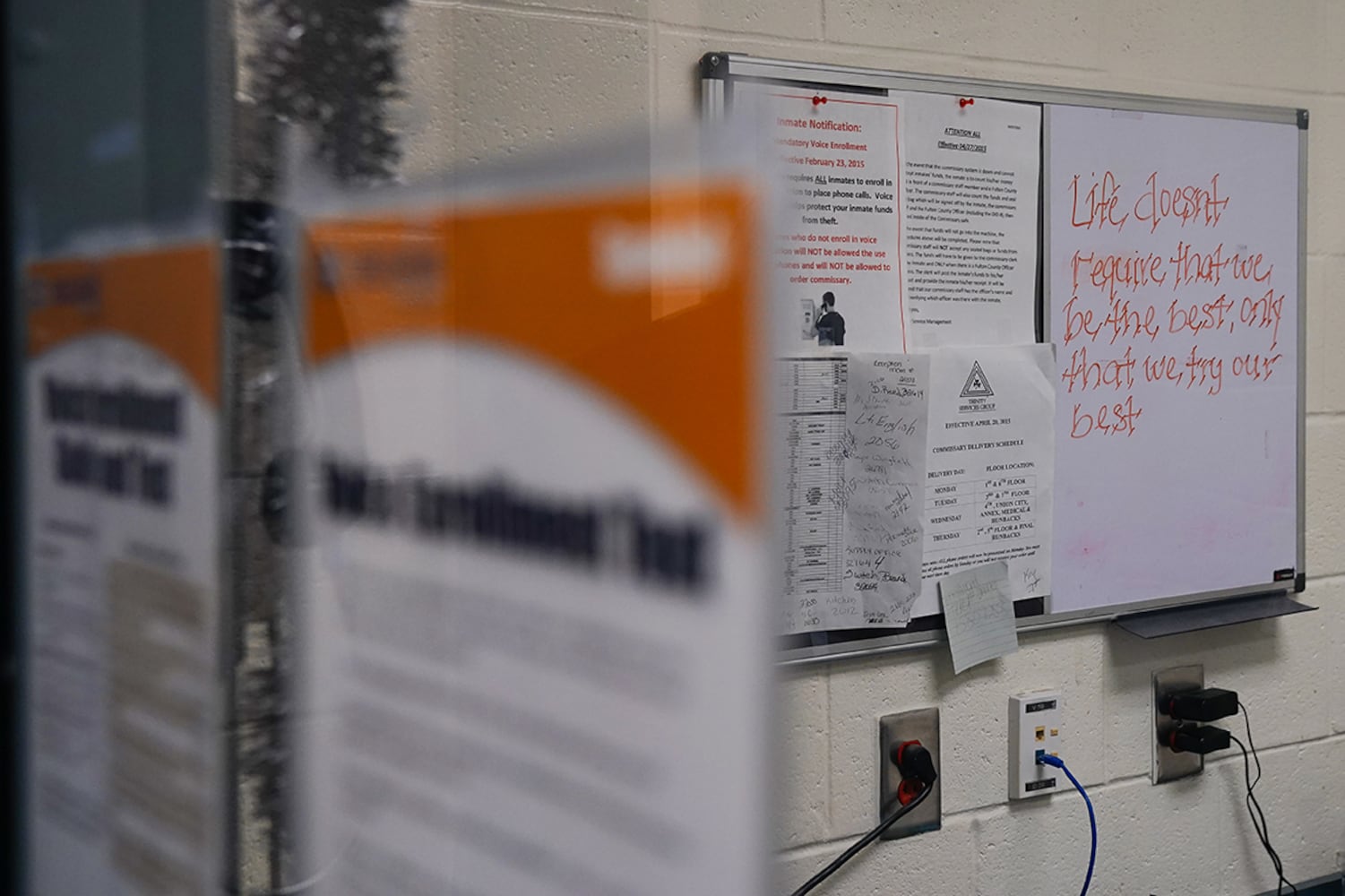Jail is something most people don’t think about until it confronts them.
Newly elected Fulton County Sheriff Patrick Labat is confronting county commissioners and taxpayers with what he says is a desperate need for a new jail that will allow for the more humane treatment of prisoners — and its estimated price tag of between $400 million and $500 million.
Fulton County leaders acknowledge the Rice Street jail has been insufficient almost since the day it opened in 1989. Just last month, multiple Atlanta City Council members were left stunned after a tour of the facility. With 400 prisoners over the 2,500-prisoner capacity, many inmates were sleeping in common areas.
“We have an obligation as a sheriff’s office to treat people like they’re humans,” Sheriff Patrick Labat told The Atlanta Journal-Constitution during a recent interview.
Labat is trying to convince county leadership to renovate the existing jail or build a new facility, and said he’s open to selling the land on Rice Street and building on another site. Labat said he wants shovels in the ground in 18 months and for the new facility to open in 4 to 5 years.
All of that figures to be a tough sell.
No votes have been cast for or against a new jail. Not a single penny has been allocated to explore the idea. And it isn’t clear if there will be the support from budget-conscious county commissioners, who may be reluctant to commit so much money in an era when public protests are demanding alternatives to arrest and incarceration.
But Labat says he needs a new jail to offer the services that would help inmates, including proper mental health services and substance abuse care, because be can’t provide them in the current space.
There isn’t consensus among commissioners, but it’s fair to say several are skeptical of Labat’s proposal.
“That’s a very premature thing to throw out without a feasibility study and further understanding,” said Commissioner Bob Ellis. “ ... There’s a lot of sheriffs that like to talk a big game.”
‘Lipstick on a pig’
This is all happening as Labat also makes a pitch to buy the Atlanta City Detention Center, which he ran for more than a decade. Mayor Keisha Lance Bottoms has vowed to close the city-owned facility and turn it into an equity center, but some on the city council are pushing back.
Labat says he needs a new main jail regardless of what happens with the detention center, because the Rice Street facility won’t let him provide restorative services.
But Xochitl Bervera, director of Racial Justice Action Center and a member of the task force that recommended razing Atlanta’s detention center, says Labat’s mission is flawed and beyond him.
“Sheriff Labat’s expertise and experience is in jailing people, not in the kind of specialty expertise needed to provide culturally competent mental health services to a person in need,” she said. “It’s a very different skillset.”
Bervera said spending money on housing or another social service on the front-end of society is better than trying to help people after they’ve been incarcerated.
“You can put lipstick on a pig, but it’s still a pig,” she said. “You can have these services in a jail, but evidence bears out that mental health services based in communities are far more effective.”
Newly elected Fulton commissioner Khadijah Abdur-Rahman is the only member of the legislative body who has endorsed Labat’s plan. After the recent jail tour, she said conditions there are “worse than what we see in third-world countries or war zones.”
“It’s just outdated, physically, technologically,” she said.
Abdur-Rahman supports a study, but is interested in selling the 55-acre property because the market is drooling over Westside real estate.
“It would be such a win-win should they decide to keep it and build it, or sell it and use that money to build somewhere else and have more money is the coffers for Fulton County,” she said.
Abdur-Rahman said her fellow commissioners agree privately that something must be done, but some are scared of the high price tag for one of the largest and most complex capital projects Fulton could undertake.
On the low end, a new jail’s cost would roughly equal the amount Cobb County spent to help build the Braves a ballpark.
“We don’t have anything to show the public how much money they’re losing definitely versus what they’ll gain in the long run,” from a new jail, Abdur-Rahman said.
Commissioner Liz Hausmann said she would support a feasibility study.
“I don’t want to use the word ‘crisis’ but it’s a serious situation,” she said.
‘Different environment’
The county has changed a lot since the jail opened 31 years ago: Fulton’s population has nearly doubled, and there is no unincorporated residential part of the county because the cityhood explosion of the early 2000s scooped up all such land.
Besides paying taxes and vehicle fees, cityhood means the only time most people directly interact with the county is inside a voting booth, courtroom or jail.
But some things don’t change.
The county’s jail has been the subject of federal legal scrutiny on and off since 1982. The construction of today’s jail building was rushed along because of a federal lawsuit regarding over-crowding. It cost taxpayers $50 million when it opened in October 1989 and, despite being 6.5 times larger than the previous jail, immediately filled up because of the nation’s war on drugs.
Credit: Elijah Nouvelage
Credit: Elijah Nouvelage
Martin L. King III, a Fulton commissioner at the time, said: “If we don’t do something — while we are opening this facility today, six months from now it will be obsolete.”
He was off by a month.
Just five months after opening the new jail, county officials were considering a bond referendum for a $35 million expansion.
Stressed to unprecedented levels for years, the jail began to fail. Inmates escaped from windows using bedsheets as ropes. The walls leaked when it rained. Some inmates waited nine months for a grand jury indictment. Drains backed up because 70 people shared two showers.
U.S. District Judge Marvin Shoob got involved in April 2000 when HIV-positive inmates claimed they were not receiving adequate care or medicine. His scope quickly expanded.
By 2004, Shoob had taken control of the jail away from Fulton and given it to a former jail administrator. The then-sheriff decided not to run for re-election under accusations that she made risky investments with public money.
That meant an open sheriff’s election, and the centerpiece issue was jail over-crowding.
One of the contenders was Labat. A summary of his platform in the AJC read: “The county, he says, may need a new jail, and if that’s the case, he plans to finance it with something other than a bond referendum. If elected, Labat says he wants to take control of the jail as soon as he takes office.”
He lost. And the jail would be under federal oversight for 11 more years. During that time, Fulton taxpayers spent $1 billion to bring the jail into compliance.
Credit: Elijah Nouvelage
Credit: Elijah Nouvelage
Now, seventeen years later, Sheriff Labat says bonds would almost assuredly be needed to build a jail, but he’s still interested in private money. That doesn’t mean he’s pitching a Coca-Cola or Delta wing to the jail. Instead, he hopes a local executive or philanthropist with personal or close experience in mental health or substance abuse may be willing to fund programs.
Alton Adams, Fulton’s deputy chief operating officer in charge of public safety, said the idea of improving the jail isn’t novel — but the jail itself has changed over the years.
“The definition of jail, in addition to providing incarceration has changed,” he said. “We’ve learned a lot. Therefore the demands and the opportunity for someone while they’re in jail, including better ability to treat mental health, better ability for learning and GED and better ability to sustain health crisis — is something that wasn’t built into the current construct of the jail.”
Adams said they’ve already received pushback from people not wanting any more jail space for fear that it will just fill up.
To those people, he has a word of caution: “Building a new jail doesn’t mean building a bigger jail. What it means is that whatever the need ... that you are building a different environment.”
Adams said a feasibility study would take six to nine months, but that hasn’t even been proposed to commissioners.
“These are early days ... but we’d be failing in our jobs if we didn’t take a look at this,” he said.
(SCROLL TO EXPLORE TIMELINE)
Credit: WSBTV Videos
About the Author
Keep Reading
The Latest
Featured

